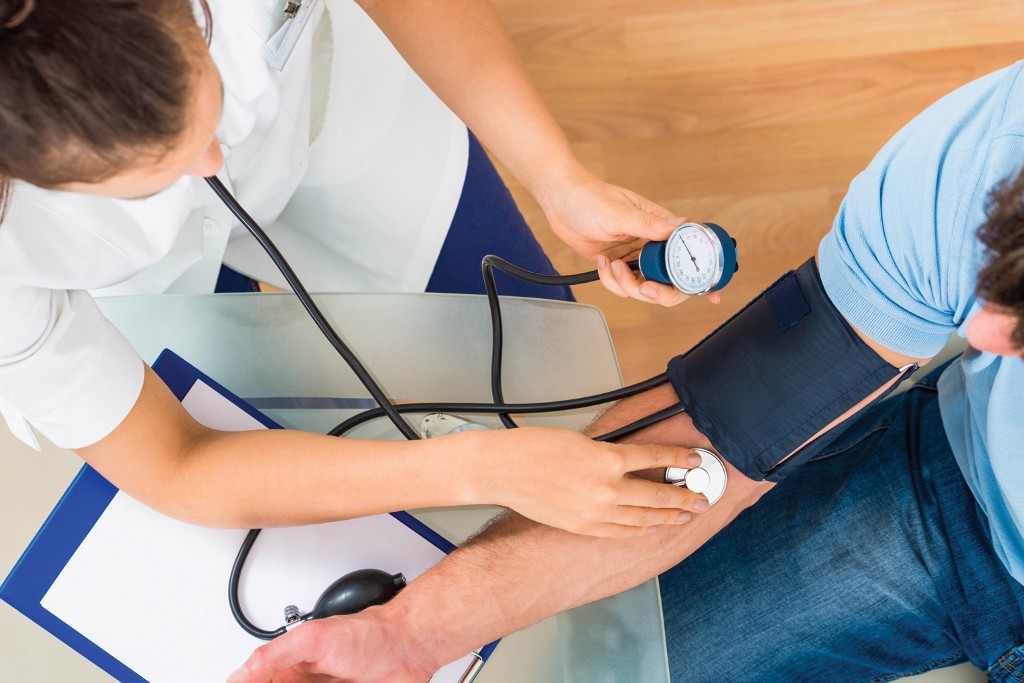A Nazareth Hospital cardiologist discusses why you should start watching your blood pressure now.

By Dr. Sonela Skenderi
Why should I start watching my blood pressure now?
Recently, the American Heart Association redefined its guidelines for measuring and diagnosing cardiovascular disease, increasing the number of Americans with hypertension (high blood pressure) by 27 million. Cardiovascular disease is the №1 cause of death in the country, and hypertension is one of the biggest risk factors for cardiovascular disease. To get ahead of cardiovascular disease, you should start blood pressure screenings around age 20 and follow up every two years. The new guidelines represent a national push to better detect, measure and treat cardiovascular disease early, when treatment is most effective.
Since hypertension has no visible symptoms, many cases go unnoticed and untreated until complications, such as stroke or heart attack, occurs. To raise awareness for early intervention, the new guidelines lower the threshold for diagnosing hypertension. Previously, hypertension was defined as a reading of 140 over 90 and “elevated” blood pressure was 130 over 80. Now, hypertension begins at 130 over 80 and elevated blood pressure begins around 120 over 80. The new guidelines account for health risks and complications that occur in the early stages of the disease and place increased importance on monitoring and early detection.
While the advanced stages of hypertension often require more advanced treatment — such as medication — preventive, non-pharmaceutical treatments are often your best bet to improve your cardiovascular health early on. With some simple lifestyle changes, you can significantly decrease your chances of developing hypertension.
Eat better. If you really commit, healthy eating can improve your systolic blood pressure by as much as 11 “points” within one month or so. Establish a diet rich in fruits, vegetables and whole grains. Eat foods (not supplements) high in potassium, such as bananas, avocados, sweet potatoes and yogurt. Avoid foods with large amounts of saturated fats or sodium, and avoid excessive alcohol use.
Exercise regularly. Thirty minutes of exercise, five days per week, can improve your blood pressure by four “points.”
Test your blood pressure at home. You can use a digital home monitor or visit your local pharmacy to track your blood pressure between doctor visits. Measure your blood pressure with a validated instrument, using a well-positioned cuff while you are in a relaxed state. Avoid exercise or alcohol 30 minutes prior, and take readings in the morning and evening. This can give your physician a more accurate reading and better insight into diagnosis and treatment.
While the new guidelines create a uniform process for taking accurate blood pressure readings, patients themselves can sometimes create unreliable measurements. Patients with “white coat syndrome” feel nervous during a checkup and, as a result, experience elevated blood pressure when measured in a physician’s office. On the other hand, some patients with “masked hypertension” have normal readings in the office but spike in other times or settings. Both instances can lead to inaccurate diagnoses, so home monitoring can be very helpful.
Regular monitoring and healthy lifestyle changes can be the keys to managing your blood pressure and treating hypertension early, before medication becomes necessary. Talk to your physician to schedule a blood pressure screening. ••
Dr. Sonela Skenderi is a cardiologist at Nazareth Hospital.





